Abstract
Acetylene reduction (AR) rates by cyanobacteria epiphytic on a moss at Marion Island (46°54′ S, 37°45′ E) increased from −5°C to a maximum at 25 to 27°C. Q10 values between 0 and 25°C were between 2.3 and 2.9, depending on photosynthetic photon flux density. AR rates declined sharply at temperatures above the optimum and were lower at 35°C than at 0°C. Photosynthetic photon flux density at low levels markedly influenced AR, and half of the maximum rate occurred at 84 μmol m−2 s−1, saturation occurring at ca. 1,000 μmol m−2 s−1. Higher photosynthetic photon flux density levels decreased AR rates. AR increased up to the highest sample moisture content investigated (3,405%), and the pH optimum was between 5.9 and 6.2. The addition of P, Co, and Mo, individually or together, depressed AR.
Full text
PDF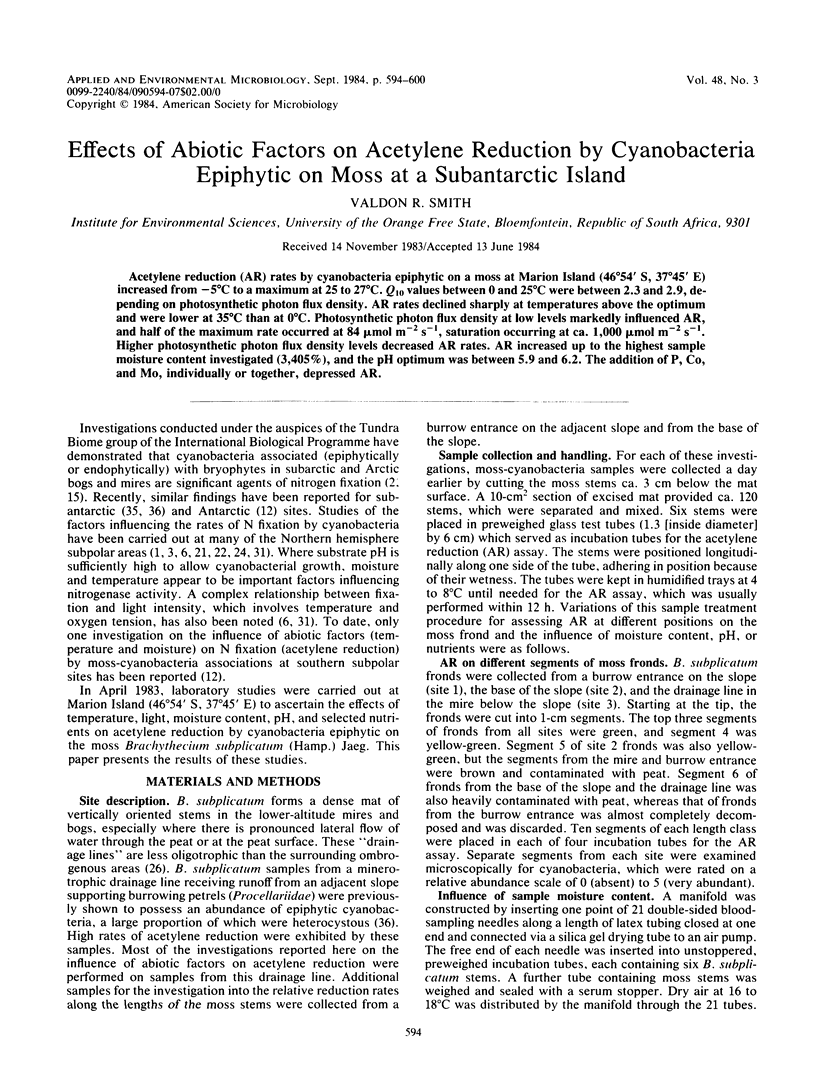
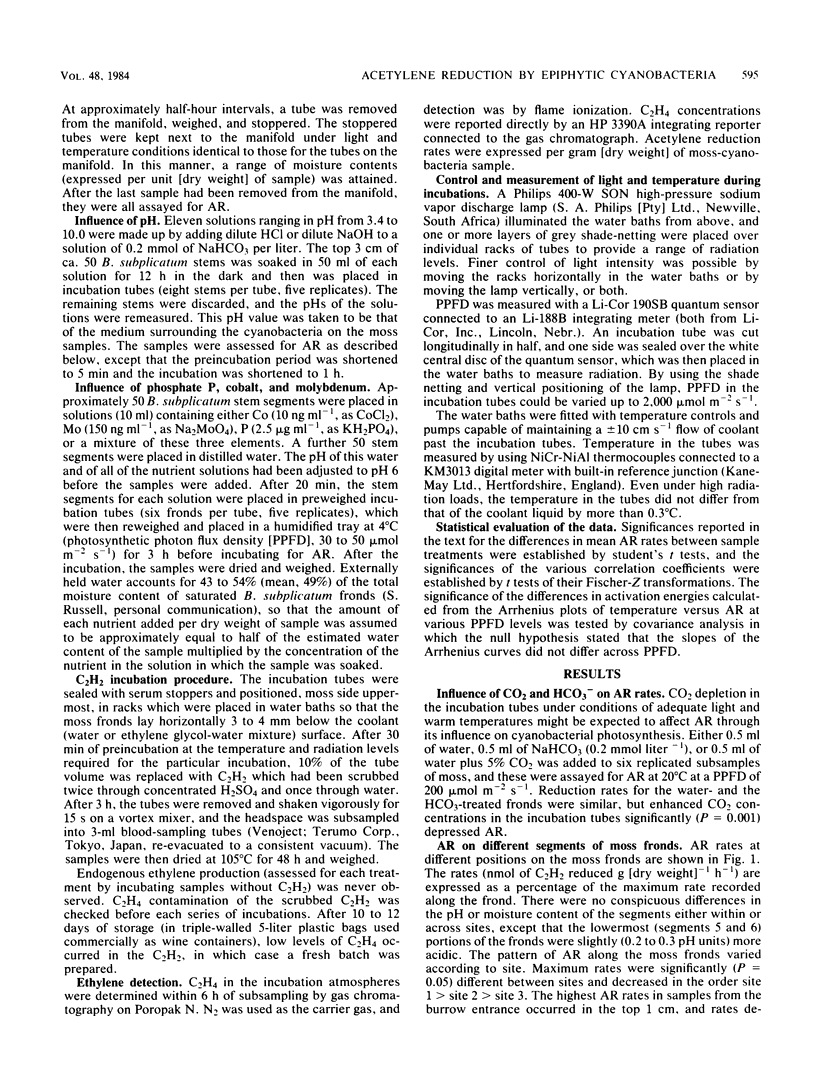
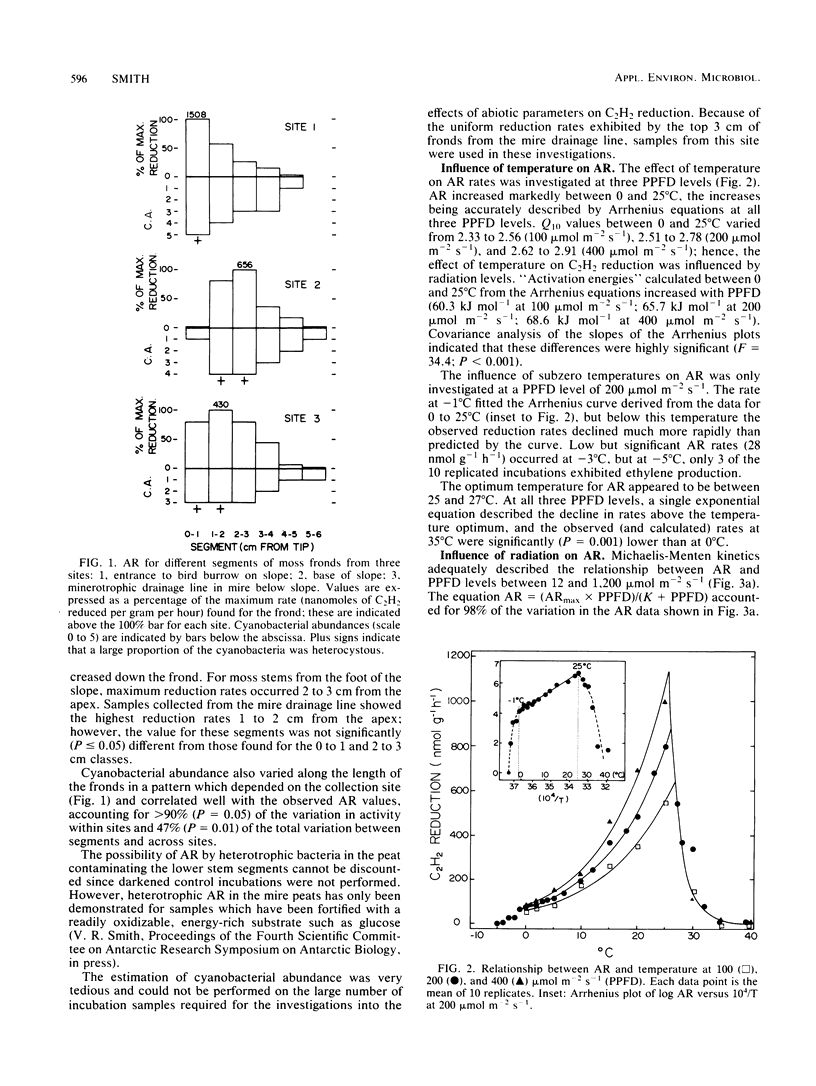
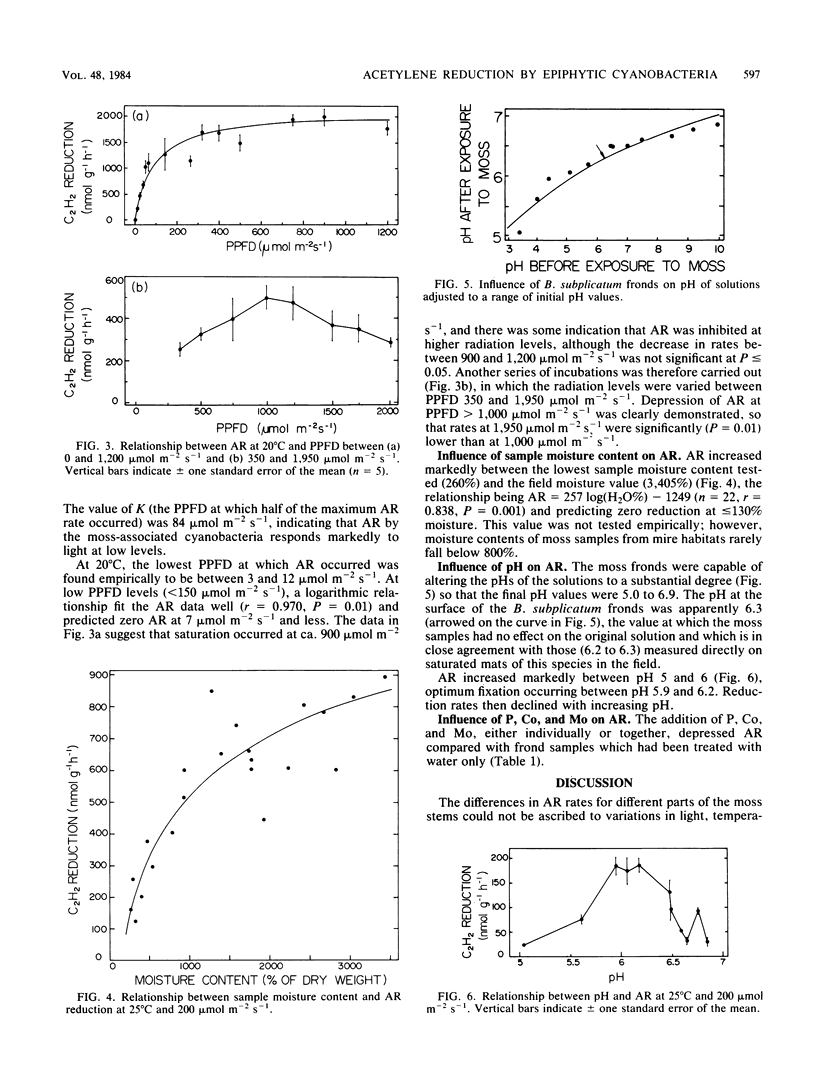
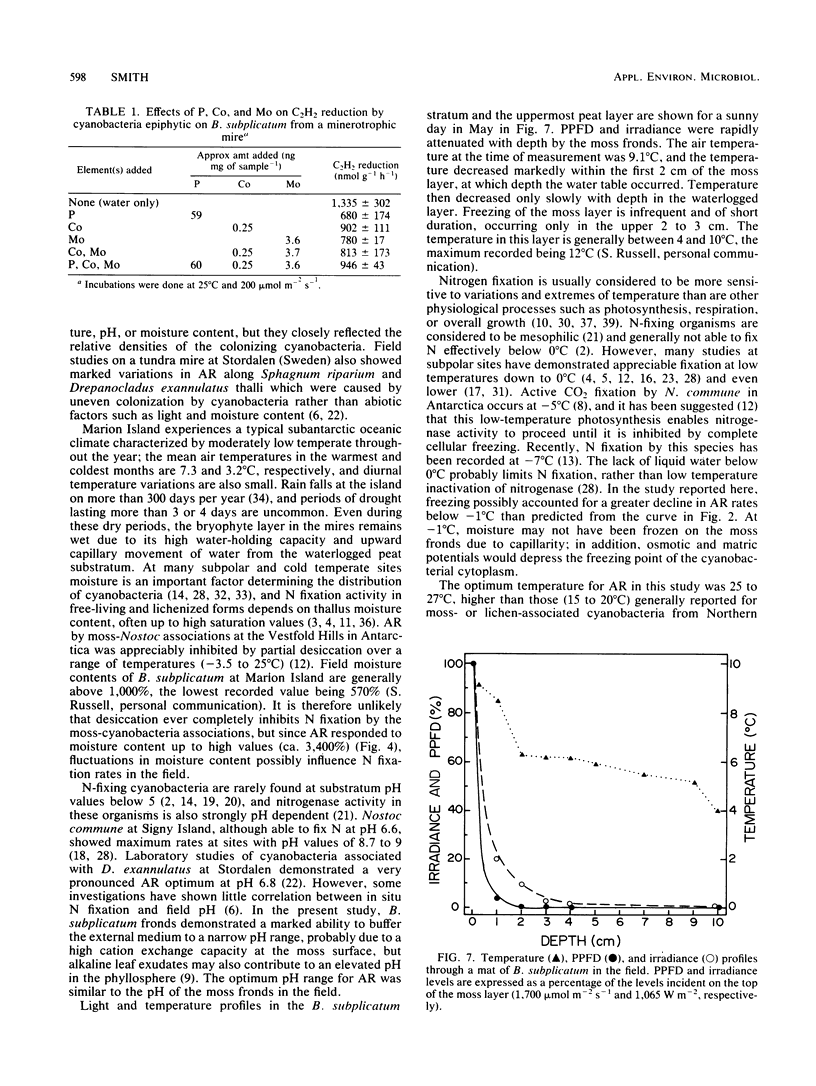
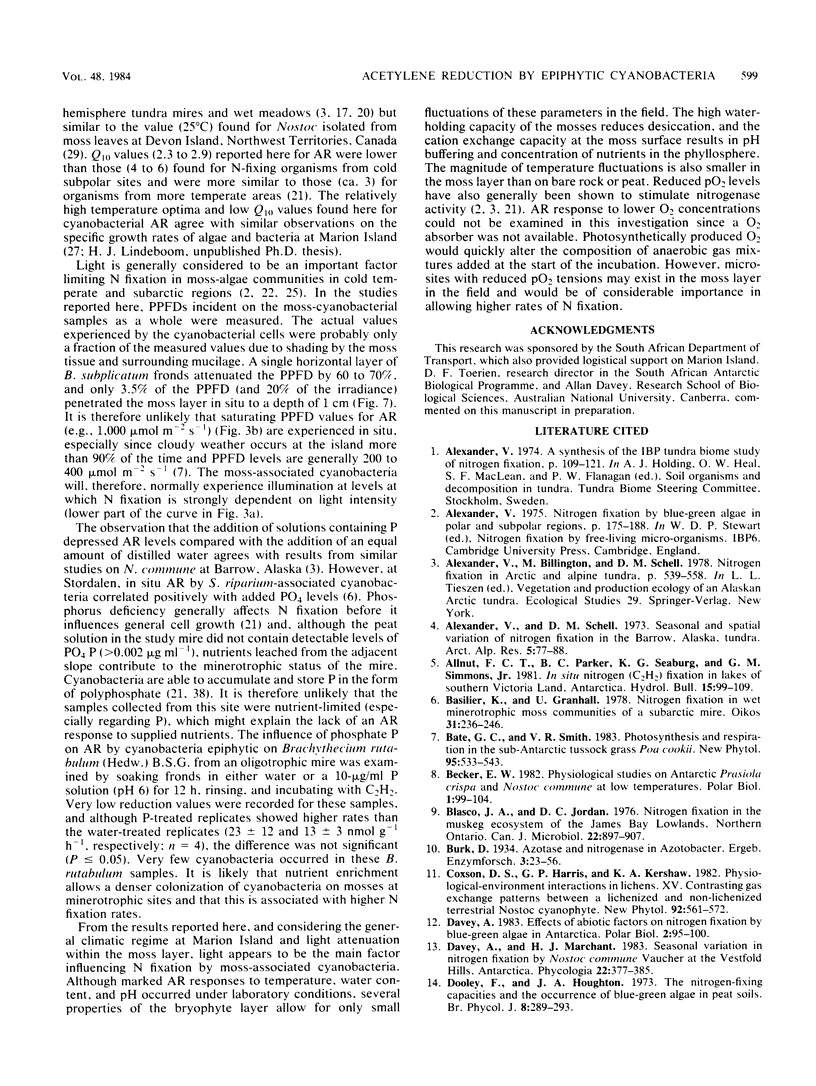
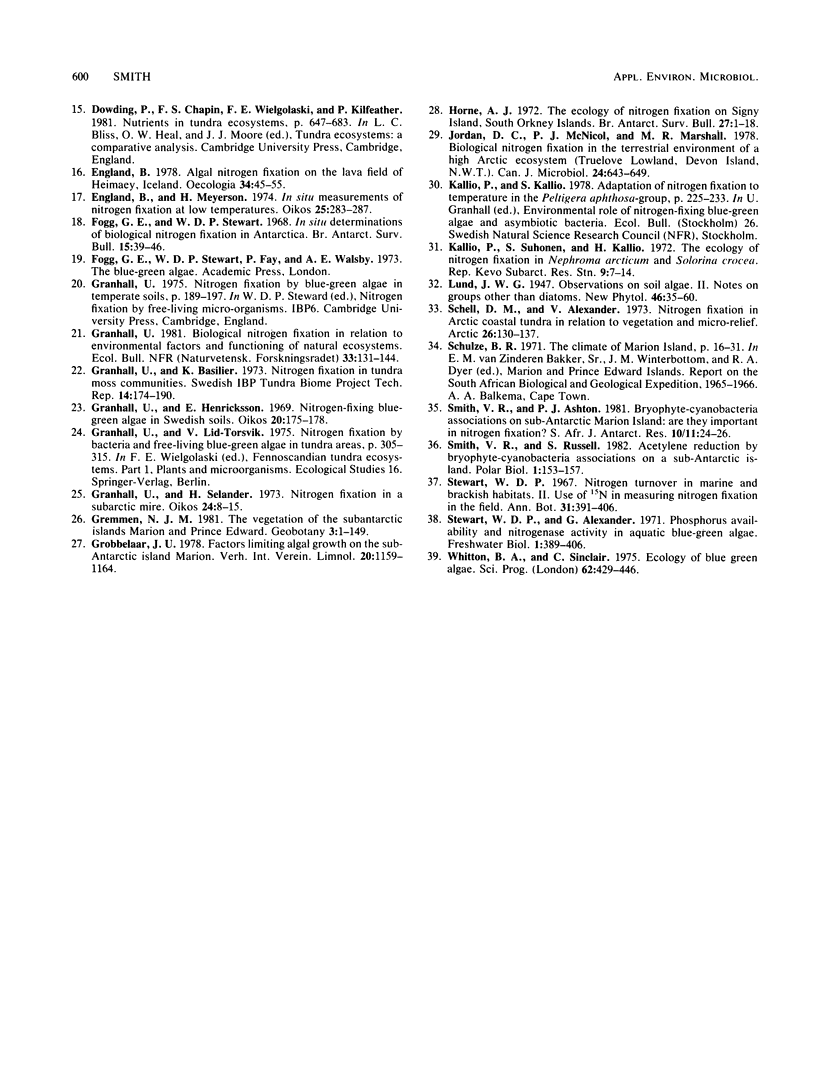
Selected References
These references are in PubMed. This may not be the complete list of references from this article.
- Blasco J. A., Jordan D. C. Nitrogen fixation in the muskeg ecosystem of the James Bay Lowlands, Northern Ontario. Can J Microbiol. 1976 Jul;22(7):897–907. doi: 10.1139/m76-130. [DOI] [PubMed] [Google Scholar]
- Jordan D. C., McNicol P. J., Marshall M. R. Biological nitrogen fixation in the terrestrial environment of a high Arctic ecosystem (Truelove Lowland, Devon Island, N.W.T.). Can J Microbiol. 1978 Jun;24(6):643–649. doi: 10.1139/m78-108. [DOI] [PubMed] [Google Scholar]


